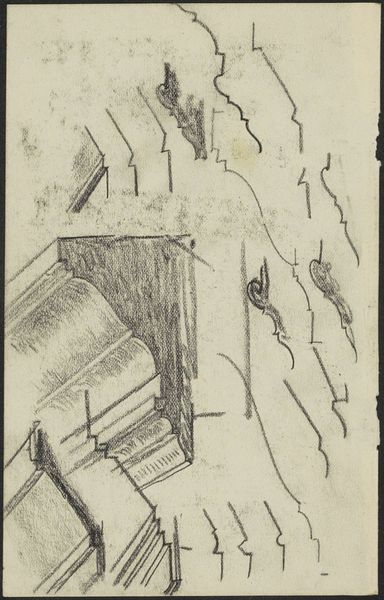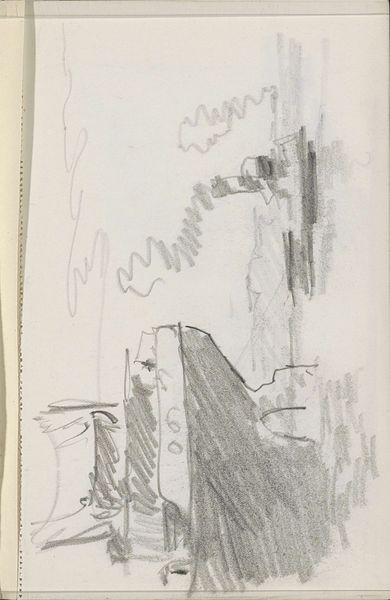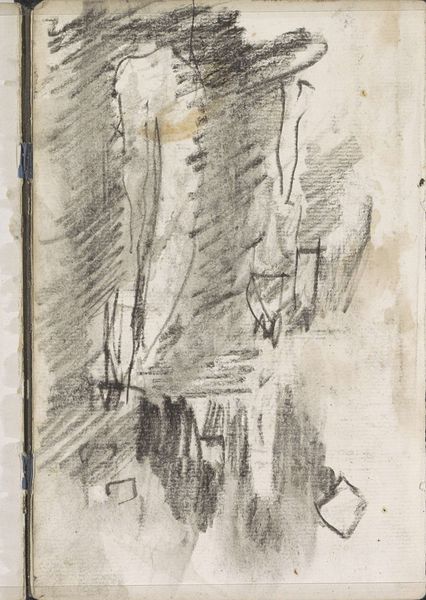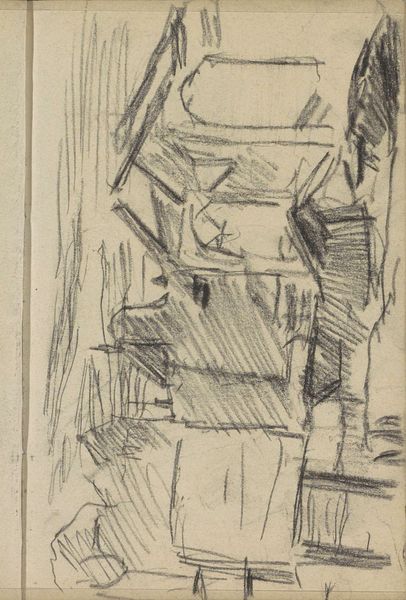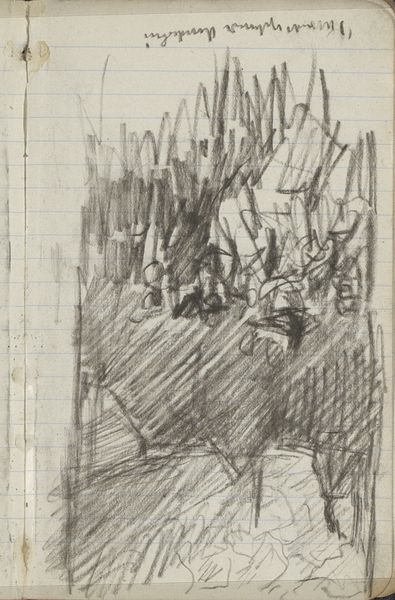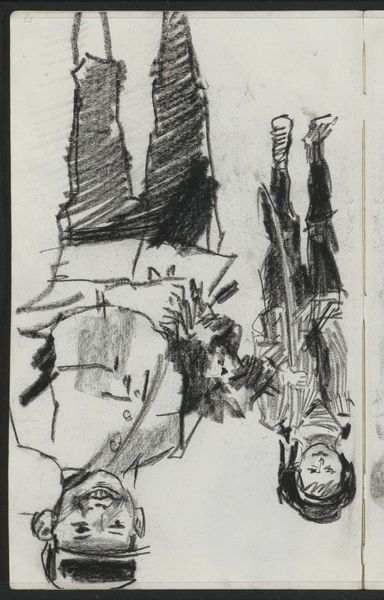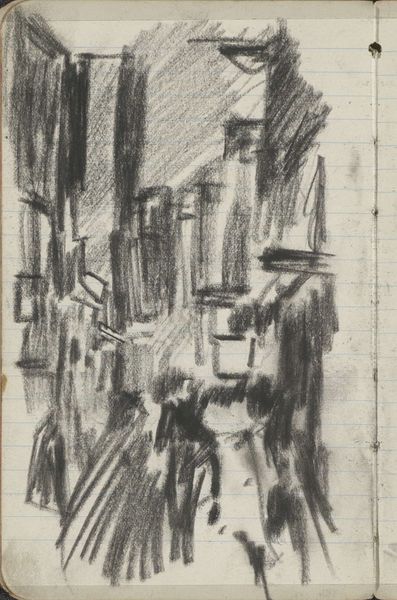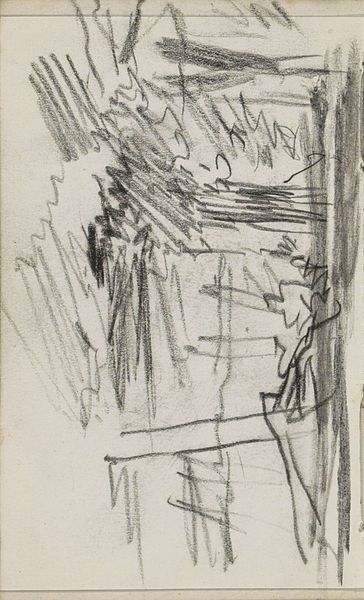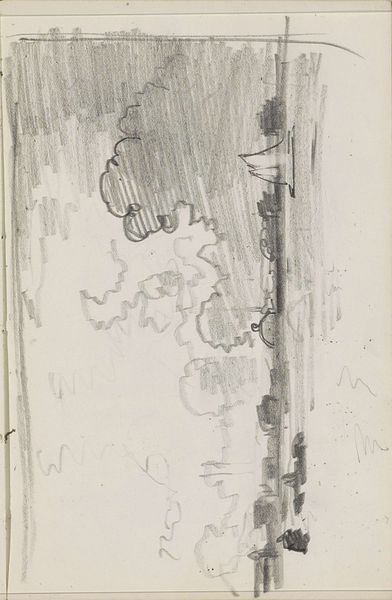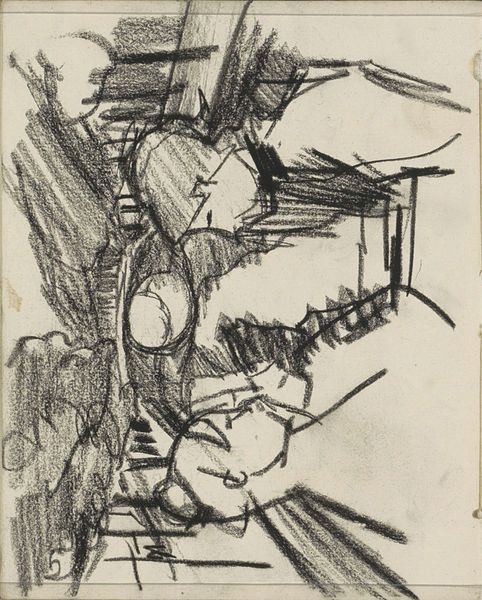
drawing, pencil
#
drawing
#
pencil sketch
#
landscape
#
pencil
#
abstraction
Copyright: Rijks Museum: Open Domain
Editor: So, here we have Cornelis Vreedenburgh's "Rows of Trees Along a Narrow Canal," dating sometime between 1890 and 1946. It's a pencil drawing currently held at the Rijksmuseum. What immediately strikes me is the abstract quality despite it clearly depicting a landscape. What do you make of it? Curator: Well, I’m struck by how Vreedenburgh uses simple lines to convey not just a place, but perhaps a feeling associated with that place. Water often signifies the unconscious, and the trees reaching upwards are perennial symbols of growth, both individual and collective. The tight composition channels this energy, and perhaps also constraint and limitation. Editor: Limitation? Because of the narrow canal? Curator: Yes, and also the medium. Pencil sketches allow the artist to quickly grasp something essential and often speak of in-between states. They often act as mnemonic devices – memory aids triggering recollections, experiences, perhaps shared stories. Notice how he renders the reflections as almost agitated, as if disturbed…what do you suppose that signifies? Editor: Maybe instability or uncertainty? Like things aren't quite as they seem on the surface? Curator: Exactly! The "reality" above and the reflection below create a liminal space that pulls in two directions, the artist seemingly dwelling in-between these states. We may well ask ourselves where the banks of the canal truly lie. Do they represent two aspects of society, of being? Does this sketch, perhaps, mirror the tension that Vreedenburgh lived in the face of an ever-changing world? Editor: That makes me look at the drawing in a totally different light. I appreciate that perspective! Curator: And I, your observations about abstraction at first sight. It reminds us that a piece, at any time, is always open for rediscovery.
Comments
No comments
Be the first to comment and join the conversation on the ultimate creative platform.

